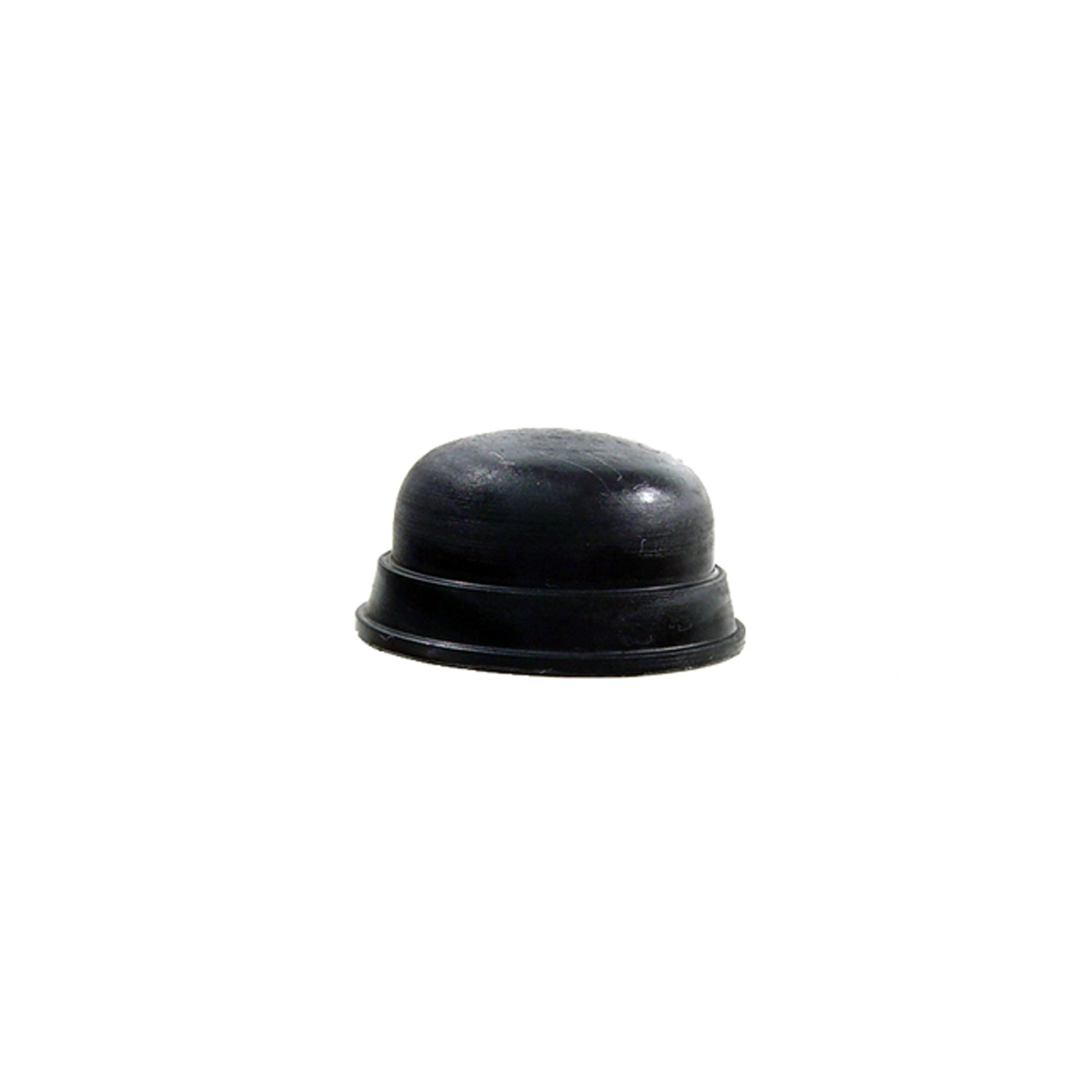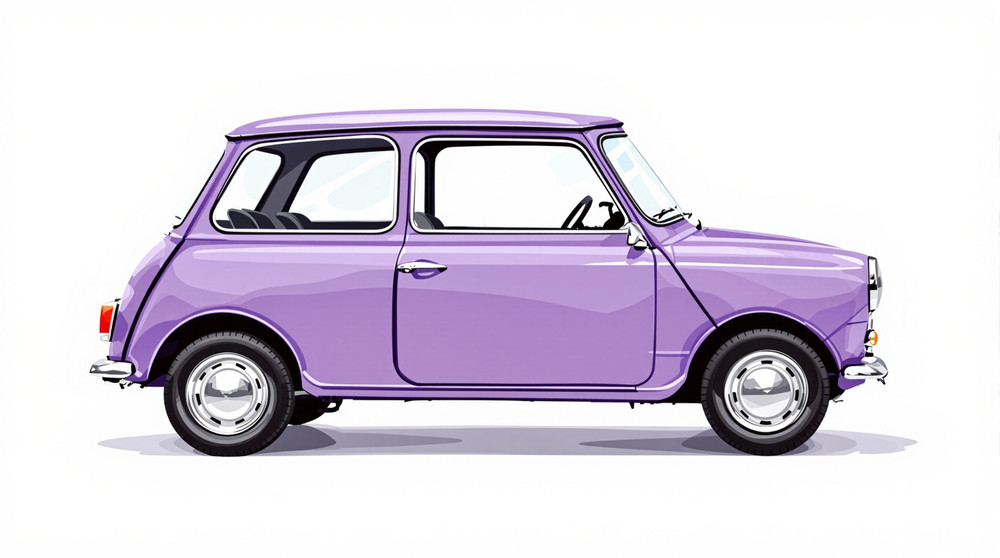Image of 1960 Austin Mini, Note: These illustrations use artistic license and may differ from actual historical models.
Performance Metrics
Fundamental Metrics
Emotional Appeal
MMP Rating
| Engine Specifications | |
|---|---|
| Engine Options: | A-Series I4 |
| Displacement Range: | 848 cc |
| Horsepower Range: | 34-55 hp |
| Torque: | 44 lb-ft |
| Compression Ratio: | 8.3:1 |
| Ignition System: | Distributor and coil |
| Cooling System: | Water-cooled |
| Performance Specifications | |
| 0-60 Time: | 26.5 seconds |
| 1/4 Mile Time: | Not available |
| Top Speed: | 72 mph |
| Transmission and Drive | |
| Drive Type: | FWD |
| Transmission Type: | 4-speed manual |
| Fuel and Efficiency | |
| Fuel System Type: | Single SU carburetor |
| MPG: | 40 mpg |
| Dimensions and Brakes | |
| Brakes: | Drum brakes |
| Wheelbase: | 80.0 in |
| Weight: | 1,410 lbs |
Note: Specifications for classic cars are given to the best of our ability, considering the limited and variant data available.
The 1960 Austin Mini: A Revolution on Wheels
When the 1960 Austin Mini rolled off the production line, it wasn't just a new car hitting the streets—it was a revolution in automotive design. Conceived by the British Motor Corporation (BMC) and crafted under the design genius of Sir Alec Issigonis, the Mini was born out of a fuel shortage and a demand for more efficient city cars. Its compact dimensions belied an innovative layout that maximized interior space, setting a precedent for small cars that would resonate for decades. A notable moment in its storied history is its surprising success in rallying, where its agility and size defied expectations and captured victories in competitions like the Monte Carlo Rally.
Design and Innovation
The exterior of the 1960 Austin Mini was characterized by its diminutive stature, rounded corners, and classic short overhangs. The car's design was both charming and functional, with a transverse engine front-wheel-drive layout that was groundbreaking at the time. Inside, the Mini was surprisingly roomy given its external dimensions, with a simple yet effective use of space. The quality of materials reflected its economy car status, but durability was a key consideration. Technologically, the Mini's rubber cone suspension system was innovative, contributing to its nimble handling. Color options ranged from muted to bright, with shades like Tartan Red and Speedwell Blue becoming popular choices among enthusiasts.
The Mini came in several body styles including two-door saloon, estate, and van variants. However, it was the classic two-door saloon that became iconic and remains synonymous with the Mini name.
Historical Significance
The Austin Mini's impact on automotive design cannot be overstated; it introduced features such as front-wheel drive and a transverse engine layout that are common in modern vehicles. Its space-saving design influenced a generation of car makers and is considered one of the most significant automotive designs of the 20th century.
Performance and Handling
Despite its modest engine size, typically around 850cc in early models, the 1960 Austin Mini offered sprightly performance with top speeds near 75 mph and acceleration from 0-60 mph in about 27 seconds. The true joy of driving a Mini came from its handling—its light weight and low center of gravity allowed it to tackle corners with ease, making it feel zippy and responsive. The driving experience was raw and engaging; from the distinctive sound of its A-Series engine to the tactile feedback through its thin-rimmed steering wheel.
Ownership Experience
The Mini quickly became more than just economical transportation; it was equally at home as a daily driver or a weekend show car. Its simplicity made maintenance straightforward for the average owner, though rust could be an issue for neglected examples.
Fun Facts
The Mini has had many famous owners including The Beatles and Steve McQueen. It held records for fuel efficiency during its heyday and has appeared in numerous films—most notably in 'The Italian Job' where it starred in one of cinema's most iconic car chase scenes.
Collector's Information
In terms of collector interest, early Minis like the 1960 model have seen appreciating values over time. While exact production numbers vary, it is estimated that several hundred thousand Minis were produced during this period. In today's market, well-preserved or expertly restored examples can fetch anywhere from $15,000 to over $40,000 depending on provenance and condition.
Conclusion
The 1960 Austin Mini is not just a piece of automotive history; it's a cultural icon that redefined what small cars could be. Its legacy is evident in every compact vehicle on today's roads—a testament to its revolutionary design and enduring charm.
1960 Austin Mini Catalog of Parts
 1960 Austin Mini Starter Solenoid Button Cover. Perfect reproduction. Each-RP 1Starter Solenoid Button Cover. Perfect reproduction. Each
1960 Austin Mini Starter Solenoid Button Cover. Perfect reproduction. Each-RP 1Starter Solenoid Button Cover. Perfect reproduction. EachWhy Choose Metro?
For over 100 years, Metro Moulded Parts has been the pinnacle of quality in classic car restoration parts. Our commitment to precision and authenticity in every component ensures a perfect fit and an OEM-level appearance.
- Expert Craftsmanship & Quality: Each part is a testament to our dedication to reliability and perfection, crafted from original designs and thoroughly tested.
- Advanced Technology: We use cutting-edge techniques to create flawless, long-lasting parts that surpass others in performance.
- SuperSoft Sponge – The Ultimate Door Seal: Not only are our door seals 30% softer than competitors', but they're also guaranteed to never leak. They effectively reduce wind and road noise, enhancing your classic car's comfort and driving experience.
- Proudly American: Our parts are a product of American craftsmanship, made in the USA with a spirit of excellence and heritage.
- Unrivaled Warranty: We back our products with a 30-year industry-leading warranty, a testament to our confidence in their quality.
Join us in preserving the legacy of classic cars with parts that are crafted for perfection, not just made.

